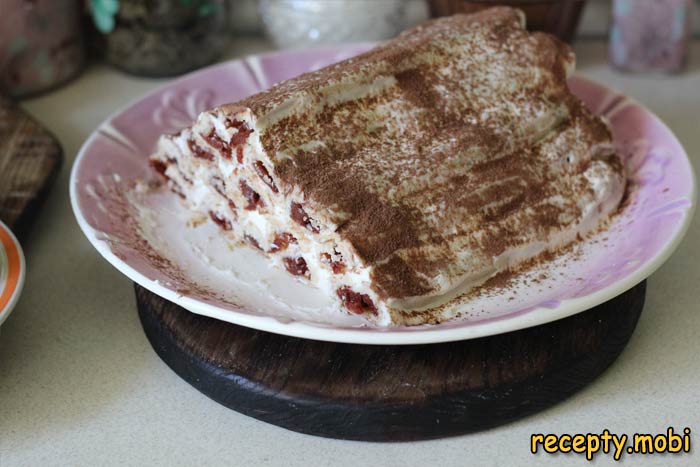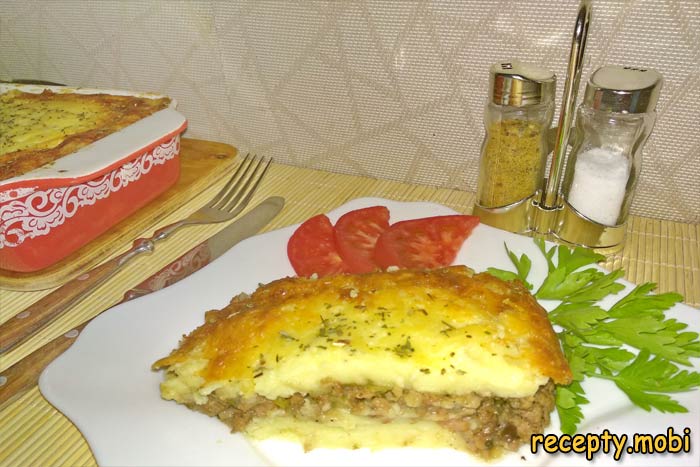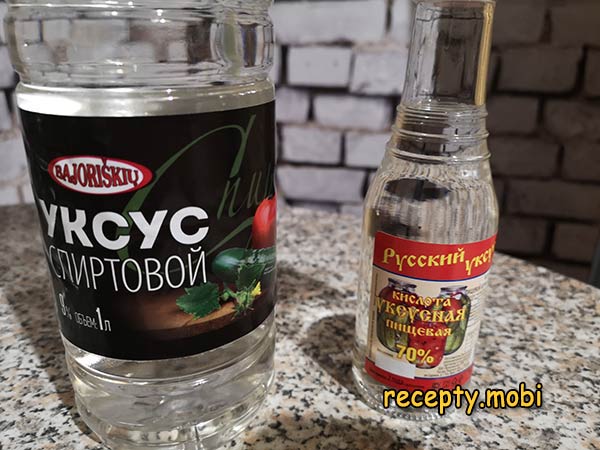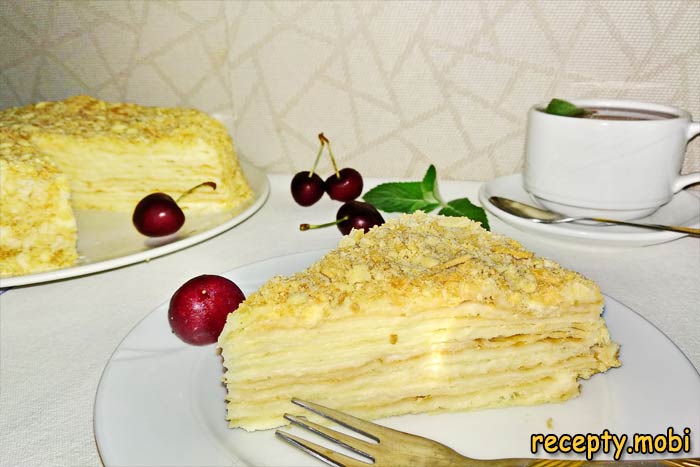
Classic Napoleon Cake with Custard Cream
The classic Napoleon cake with custard cream has been a leading dessert choice in home baking for many decades. There are many variations of this cake, and almost every cook has their own family recipe for the classic "Napoleon." The dessert has an interesting preparation method, which will be described in detail below. It's not difficult to make, and the ingredients are easy to find. To make a delicious classic Napoleon cake with custard cream, use our step-by-step recipe with photos.
Yield: 10 servings.
Preparation time: 150 minutes + soaking.
Caloric content: 252 kcal per 100 grams.
Cuisine: French.
Ingredients
For cakes:
- flour - 340-360 g;
- 1 egg;
- butter - 200 g;
- ice water - 110 ml;
- vinegar (6%) - 1 tbsp;
- salt - 1-2 pinches (or to taste).
For cream:
- corn starch (or flour) - 60 g;
- eggs - 3 pcs;
- milk - 800-900 ml;
- sugar - 150 g;
- butter - 150 g;
- vanillin - ¼ tsp.
Cooking
1. The cake is made in three stages: baking the layers, preparing the custard cream, and assembling the cake. You can experiment with the cream and dough, and your cake will always be unique. For making the Napoleon layers, all ingredients should be very cold, almost from the freezer.
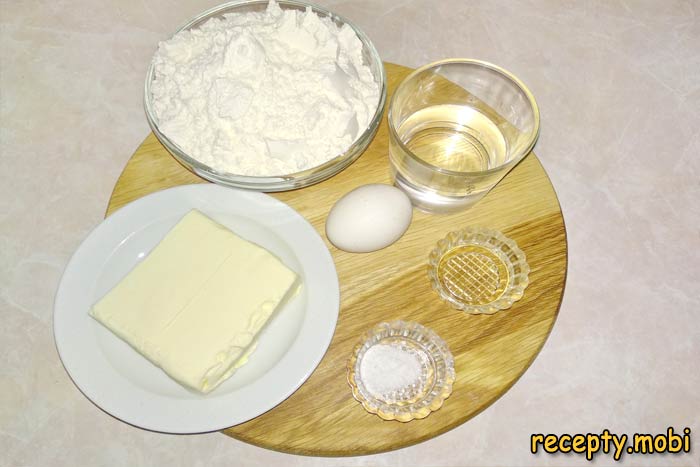
2. Start by preparing the dough layers. Take cold, almost ice-cold water, an egg, salt, and vinegar.
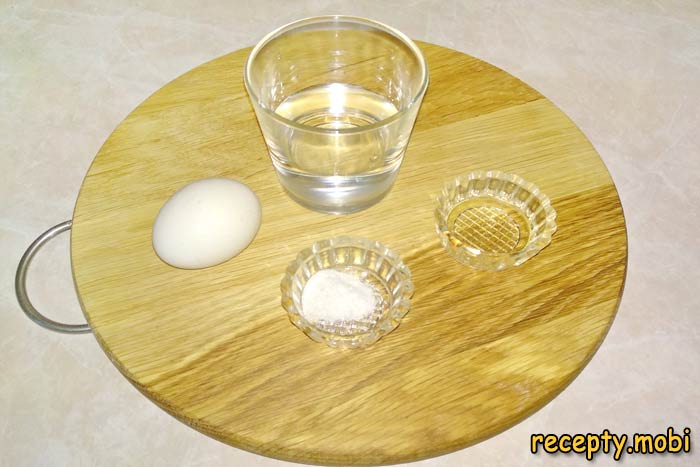
3. Add the egg and the other ingredients to a glass of water.
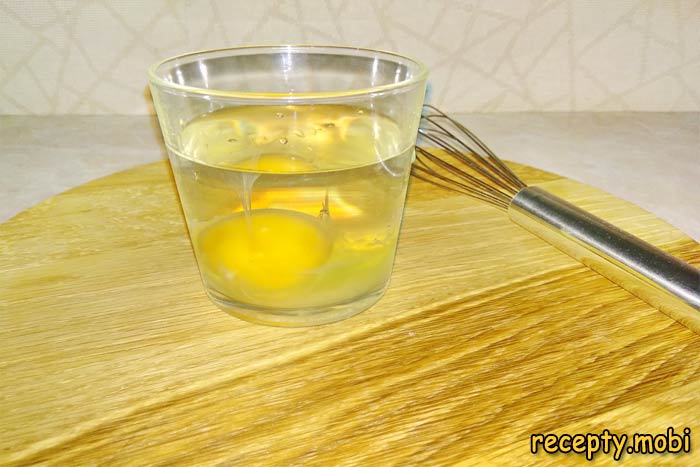
4. Whisk or stir the mixture with a fork. For now, place the bowl with the egg mixture in the freezer.
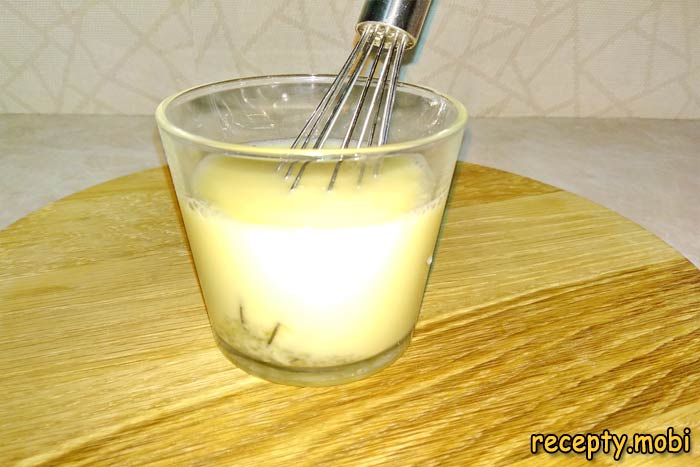
5. Sift the flour in advance to aerate it. You will also need cold butter from the freezer.
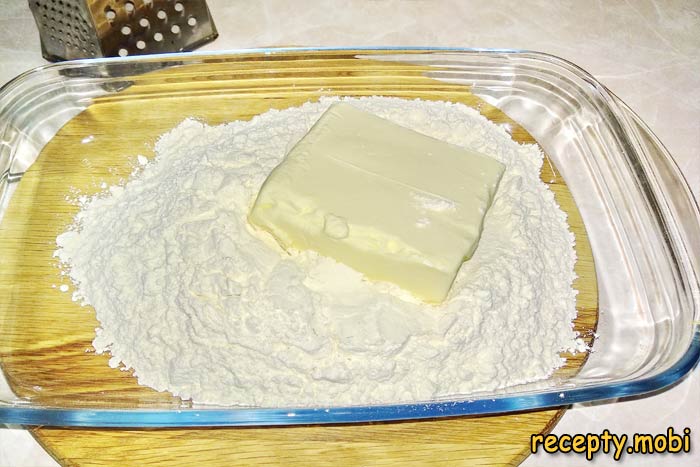
6. Coat the butter with flour. You can chop it with a knife or grate it.
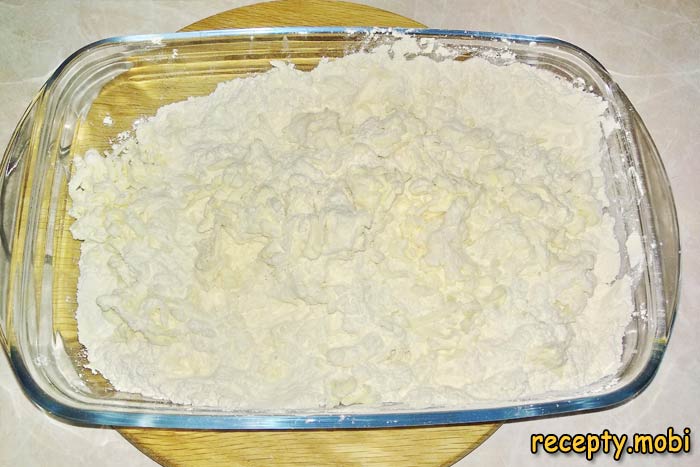
7. Using your hands, quickly rub the flour and butter together into a fine crumb. Do this very quickly.
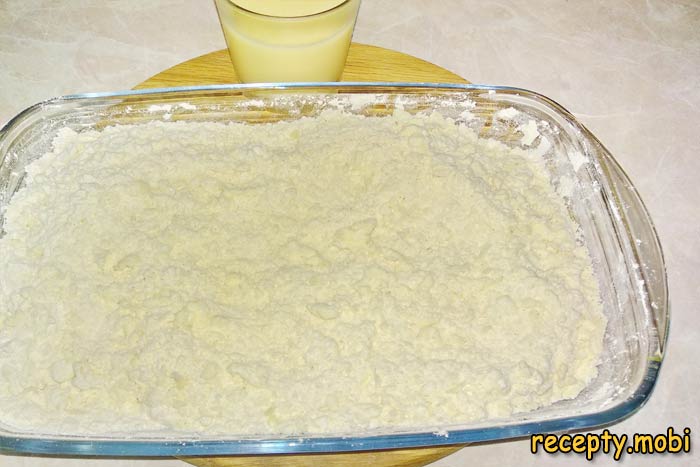
8. Pour the very cold egg mixture into the flour mixture, and initially stir with a spoon.
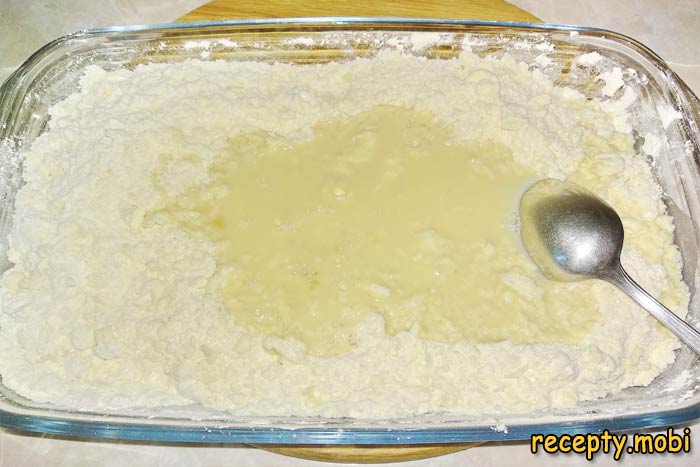
9. Combine the mass into a ball. Don’t knead the dough for too long to prevent the butter from warming up with the heat of your hands. We need flaky dough, not a smooth one.
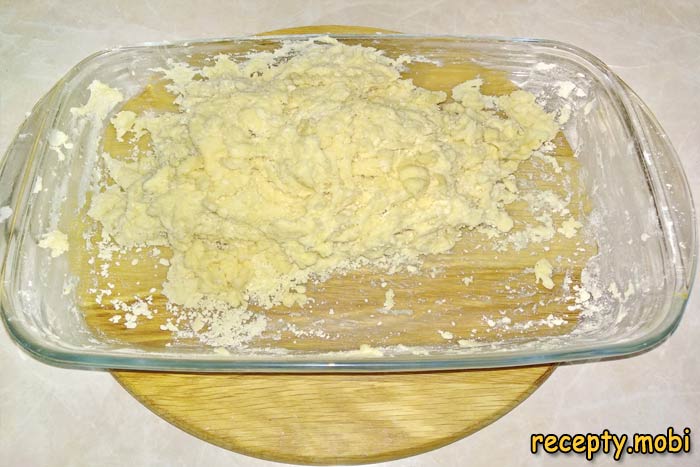
10. Divide the dough into eight to ten parts and place them in the fridge to chill. Leave the dough for 15 to 20 minutes.
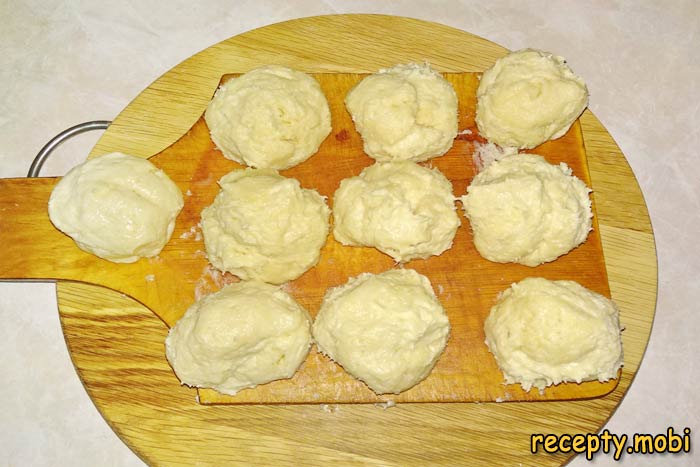
11. In the meantime, prepare the custard cream. The ingredients for the cream should no longer be cold, as we will cook the custard on the stove. Prepare the ingredients as per the list.
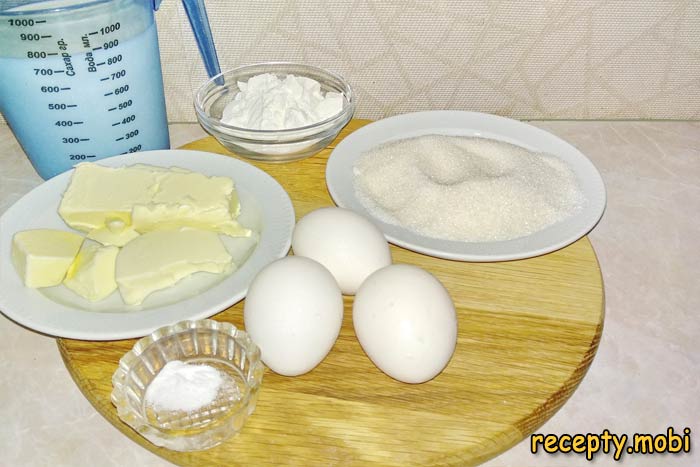
12. In a bowl, beat the eggs and add sugar.
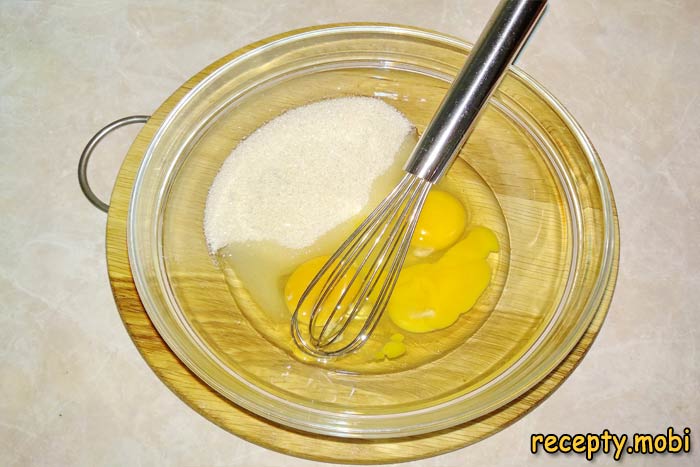
13. Whisk the mixture.
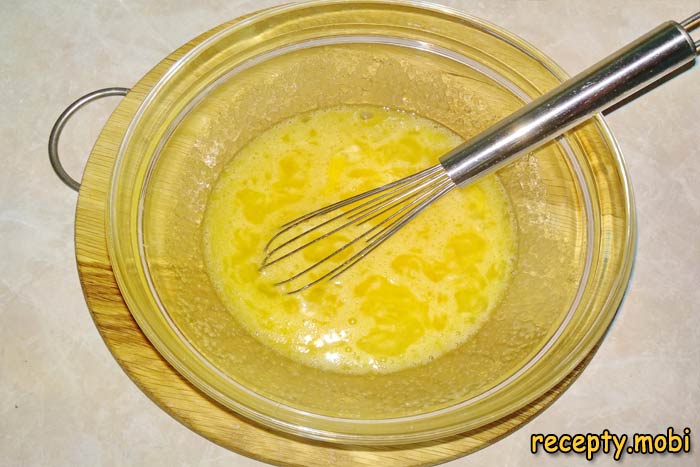
14. Add flour or cornstarch to the eggs. You can choose either, but cornstarch will make the cream smoother.
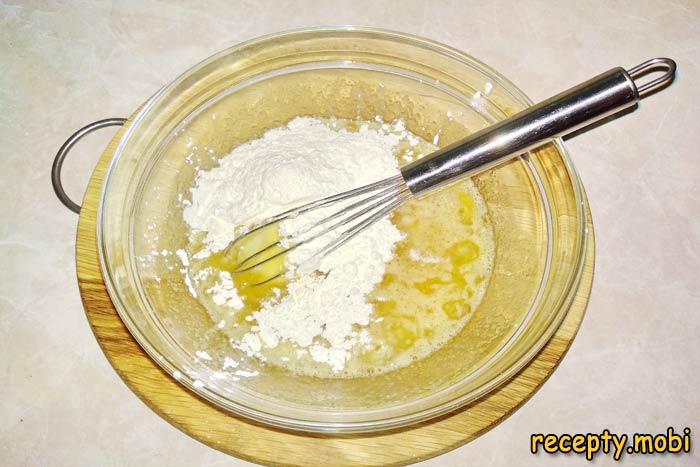
15. Mix until smooth.
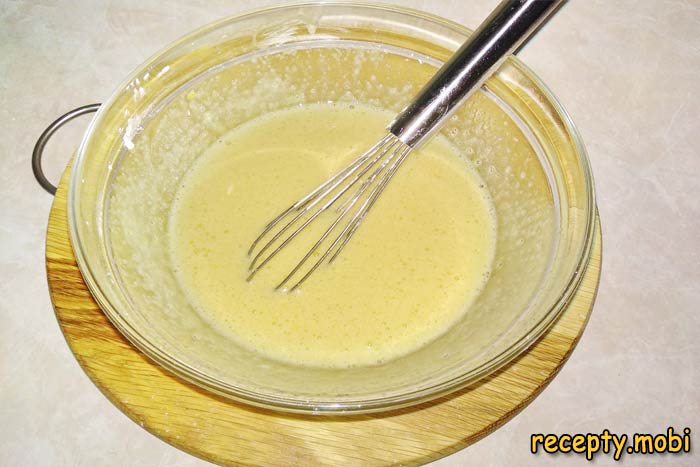
16. In a clean saucepan with a thick bottom, pour in a couple of tablespoons of water and turn on the stove. This step ensures the milk doesn’t burn while heating. Pour in the milk and heat.
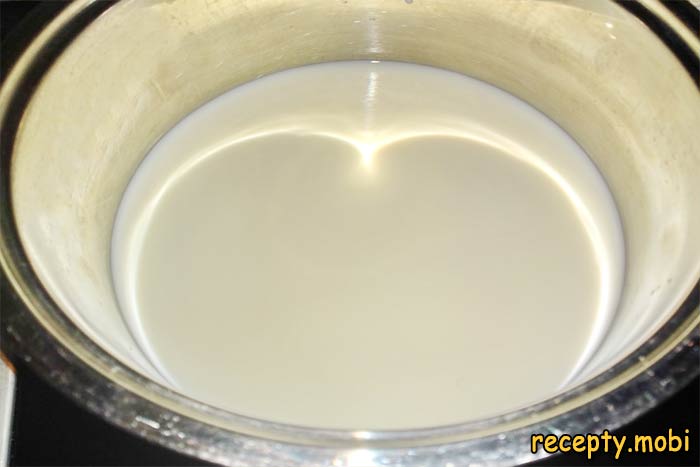
17. Heat the milk until it almost boils but don’t let it boil. There should be steam rising from the milk. Remove it from the heat. Pour the milk into the egg mixture in a thin stream, using a ladle if needed. Stir continuously to prevent the eggs from curdling due to the hot milk. Pour in half of the hot milk and mix well.
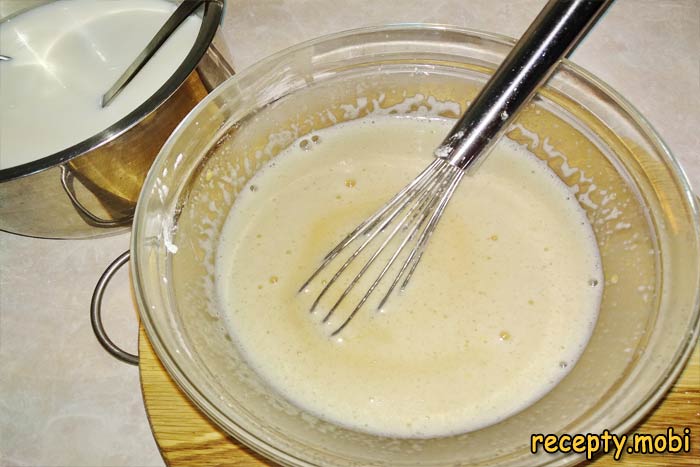
18. Return the egg-milk mixture to the saucepan with the remaining milk and heat it on the stove.
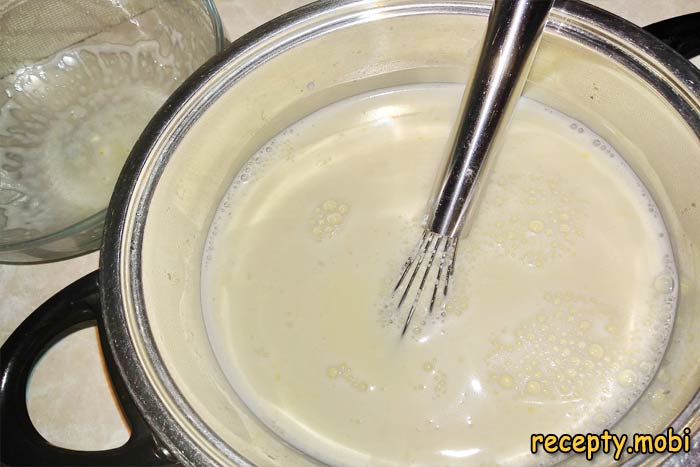
19. While making the cream, stir the egg-milk mixture constantly to prevent it from sticking to the bottom. A silicone spatula will help with this.
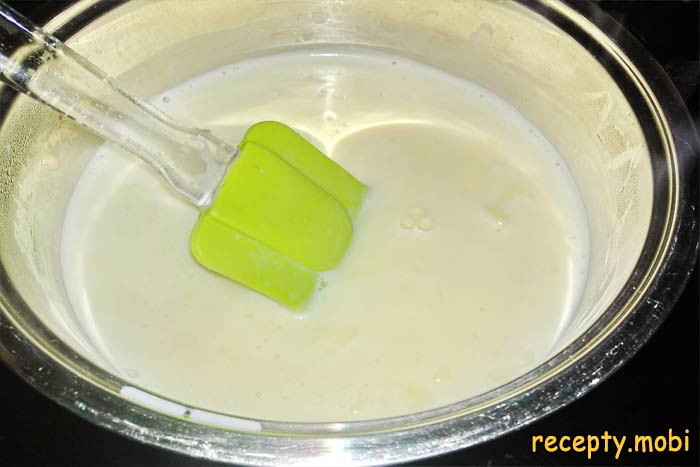
20. The custard will take approximately 10 minutes to prepare. Keep it on the heat until the first bubbles appear. Once they do, remove the saucepan with the cream from the heat.
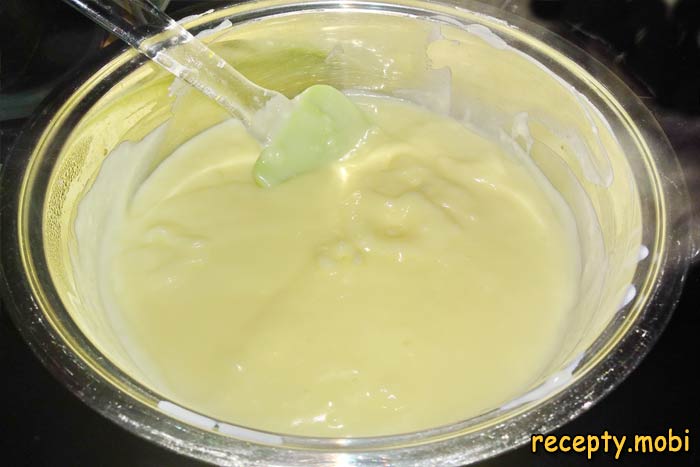
21. Immediately add the butter and vanilla to the cream. Stir with a whisk until smooth.
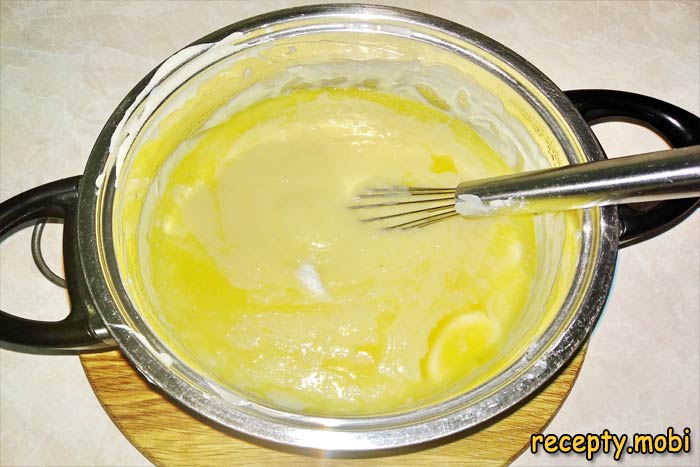
22. Now, cool the cream quickly. Place the saucepan in a bowl of very cold water, almost ice-cold. You can add ice cubes to the water for even better results. Stir the cream with a whisk to ensure it cools evenly.
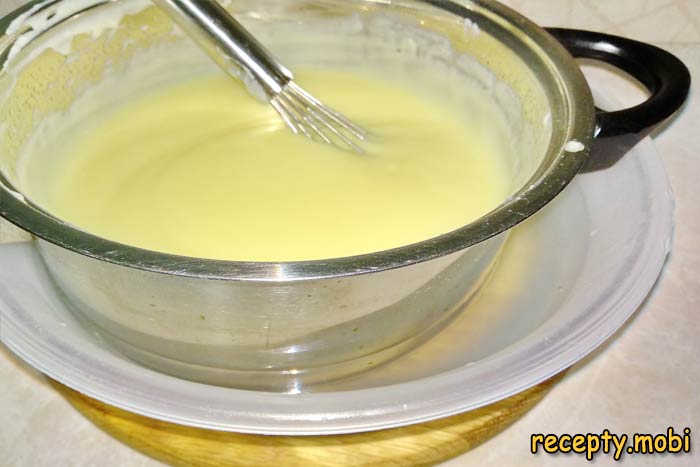
23. While the cream cools, the dough has also chilled, and it’s time to bake the layers. Roll the dough out on parchment paper into a round sheet about 1–2 millimeters thick. Use a fork to prick it to prevent puffing.
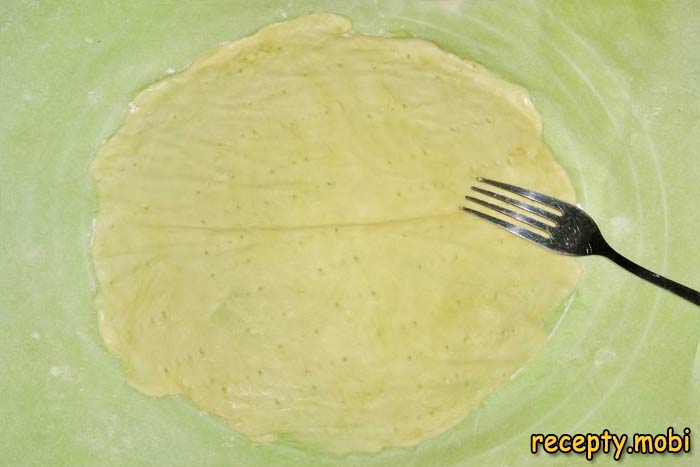
24. Take a plate or lid of the required diameter (our lid is 20 cm) and place it on top of the dough.
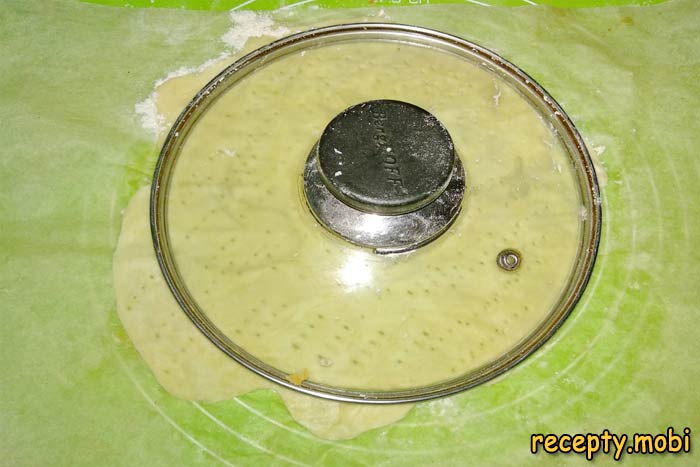
25. Press the lid down and cut out the perfectly round layers. Don’t throw away the dough edges that are not in the circle. We’ll bake them too – this will be the crumb for the Napoleon decoration.
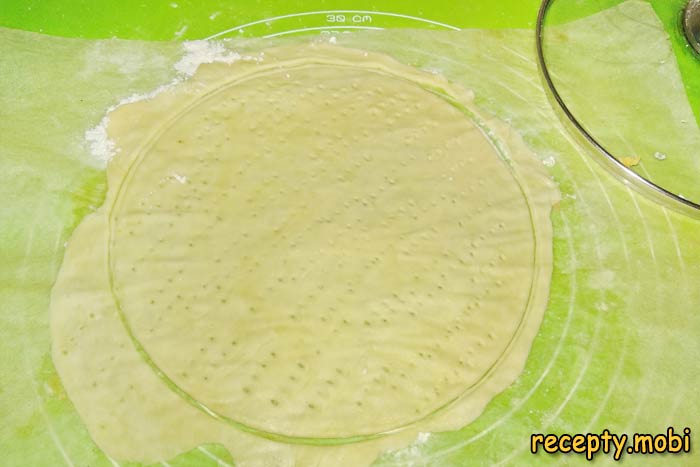
26. Bake the layers for 8-10 minutes at 180°C.
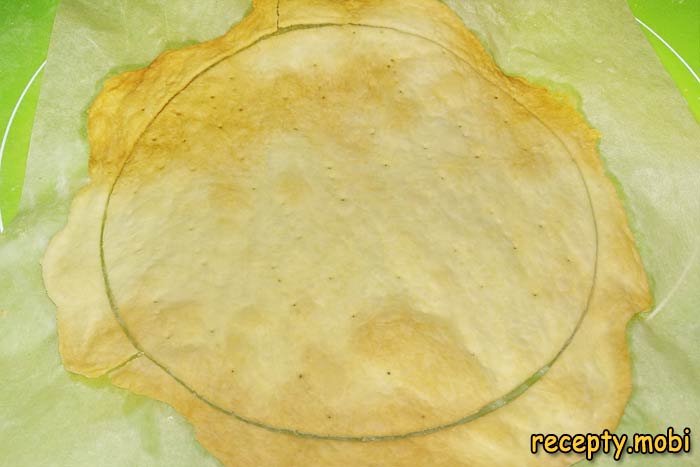
27. Transfer the golden-brown scraps to a blender and grind them into crumbs.
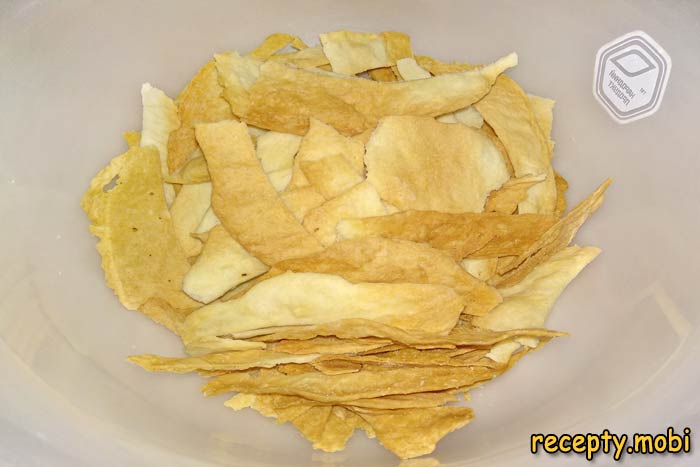
28. Alternatively, you can simply crumble the scraps by hand if you don’t have a blender.
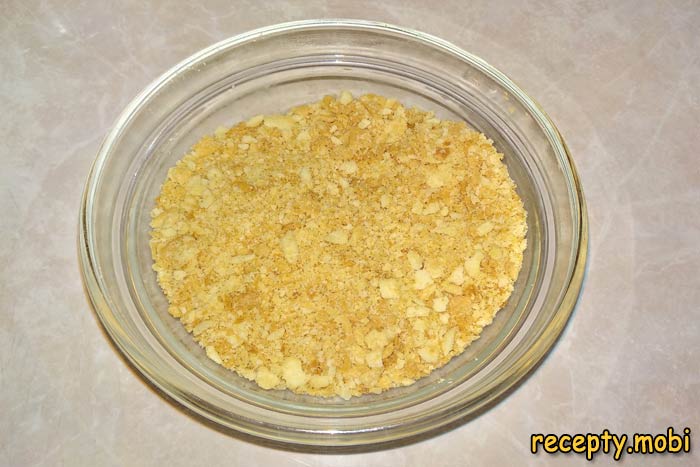
29. These are the even, flaky layers we have.
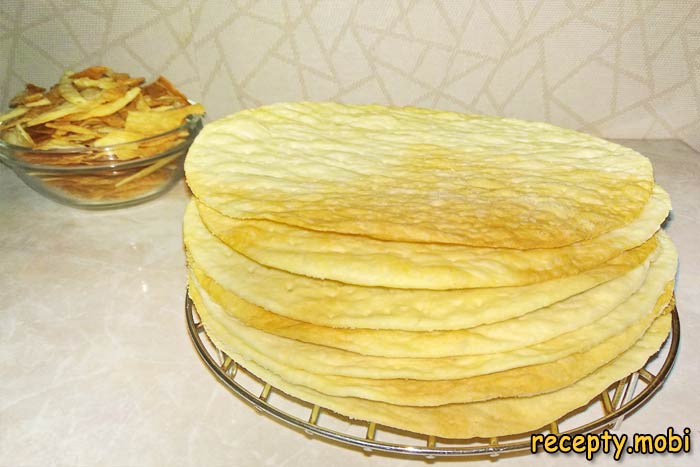
30. On a flat serving plate, spread one or two spoonfuls of cream to help the future cake stay firmly on the plate and not slide around.
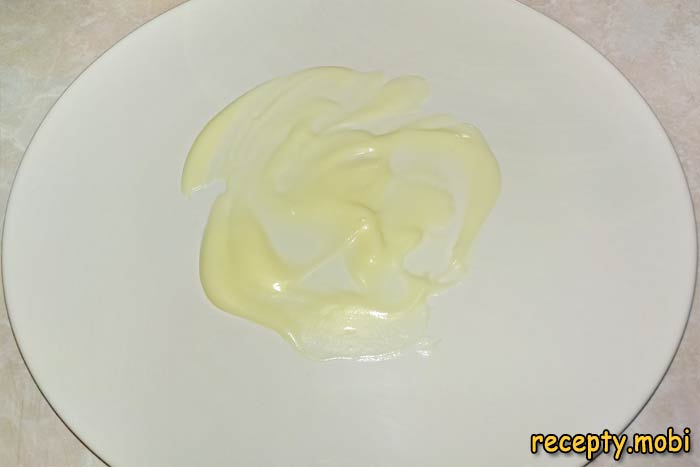
31. Place one layer of dough on top and cover it with cream.
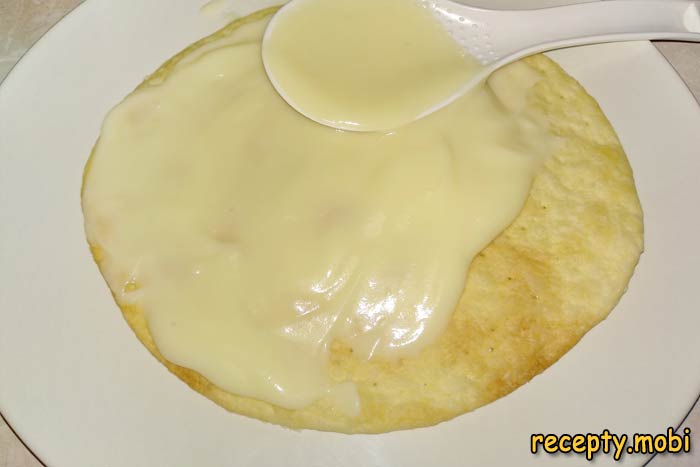
32. Continue stacking the layers, generously spreading 2-3 tablespoons of cream between each layer. Form the cake until all the layers are used up. Cover the top and sides with cream.
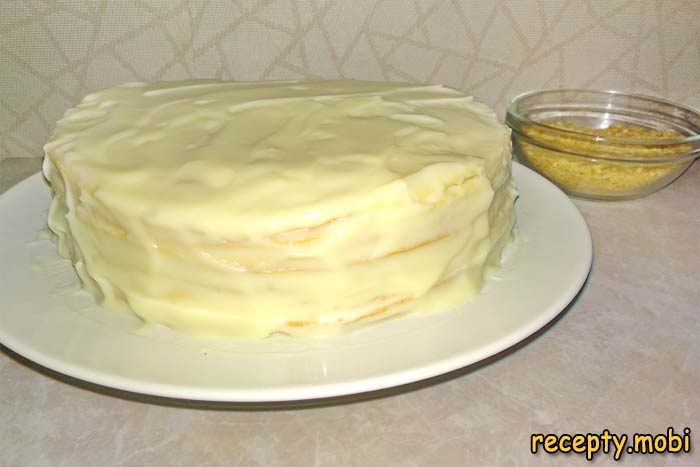
33. Coat the entire cake with the crumbs. Place the dessert in the fridge for several hours, or preferably overnight.
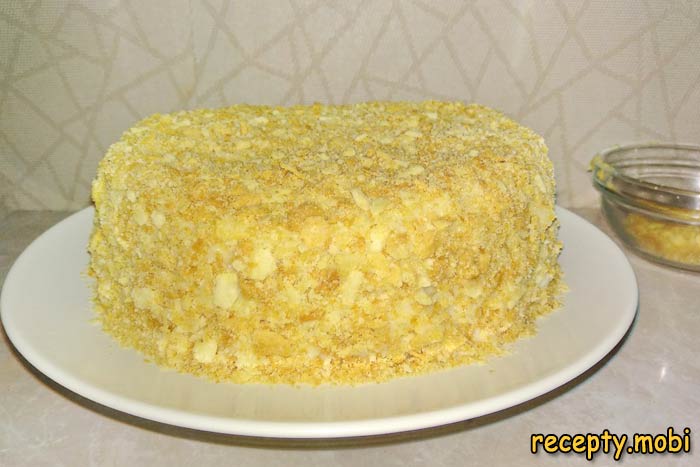
34. The classic Napoleon cake with custard cream is ready. How long the dessert stays in the fridge depends on your taste. If you prefer crunchy layers, take the cake out sooner. If you like it well-soaked with cream, leave it in the fridge longer.
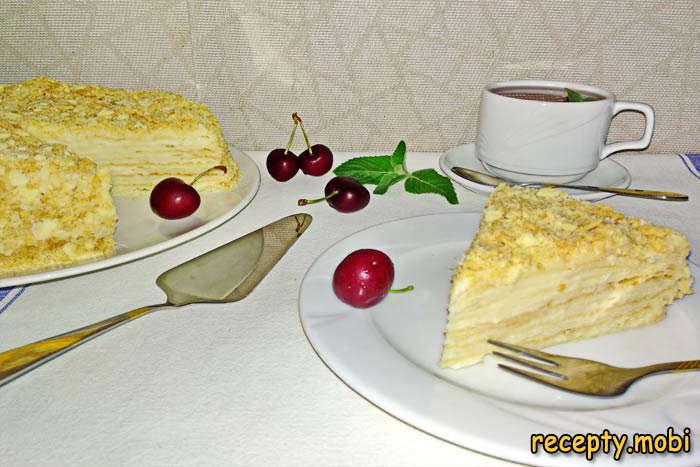
We prepare tea and call everyone to the table.
Enjoy your meal!
